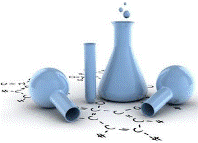Chemical and Biomolecular Engineering, Department of
Date of this Version
2011
Document Type
Article
Citation
Chem Eng Sci. 2011 April 15; 66(8): 1783–1789.
Abstract
Recently a theoretical analysis of PCR efficiency has been published by Booth et al., (2010). The PCR yield is the product of three efficiencies: (i) the annealing efficiency is the fraction of templates that form binary complexes with primers during annealing, (ii)the polymerase binding efficiency is the fraction of binary complexes that bind to polymerase to form ternary complexes and (iii)the elongation efficiency is the fraction of ternary complexes that extend fully. Yield is controlled by the smallest of the three efficiencies and control could shift from one type of efficiency to another over the course of a PCR experiment. Experiments have been designed that are specifically controlled by each one of the efficiencies and the results are consistent with the mathematical model. The experimental data has also been used to quantify six key parameters of the theoretical model. An important application of the fully characterized model is to calculate initial template concentration from real-time PCR data. Given the PCR protocol, the midpoint cycle number (where the template concentration is half that of the final concentration) can be theoretically determined and graphed for a variety of initial DNA concentrations. Real-time results can be used to calculate the midpoint cycle number and consequently the initial DNA concentration, using this graph. The application becomes particularly simple if a conservative PCR protocol is followed where only the annealing efficiency is controlling.



Comments
Copyright 2011 Louw et al.